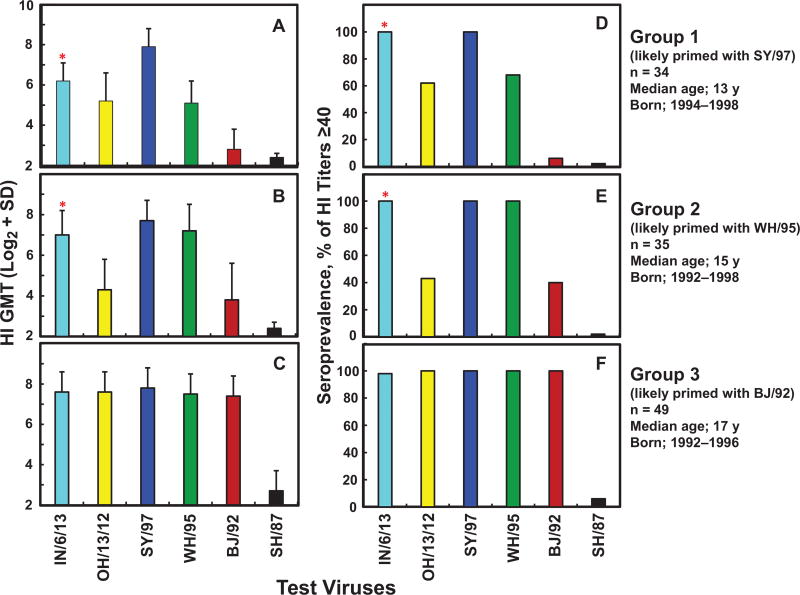Figure 2.
Priming with different 1990s human seasonal influenza A(H3N2) (sH3N2) viruses in US children influences seroprevalence of hemagglutination-inhibition (HI) antibodies to 2012–2013 influenza A(H3N2) variant (H3N2v) virus. Serum samples from children aged 12–18 years (n = 118) were collected in 2010; median ages are for this year. HI geometric mean titers (GMTs) and seroprevalence against the 2 H3N2v and 4 sH3N2 viruses are shown for 3 groups of children likely to have been primed with SY/97 (A, D), WH/95 (B, E), or BJ/92 cluster (C, F). *Significantly higher seroprevalence and HI GMTs against A/Indiana/06/2013 (IN/6/13) compared with A/Ohio/13/2012 (OH/13/12) in groups 1 and 2 (P < .01). Abbreviation: SD, standard deviation.

